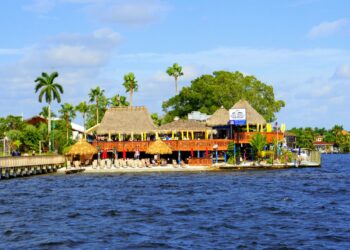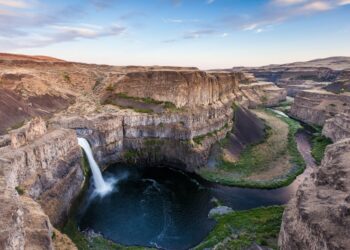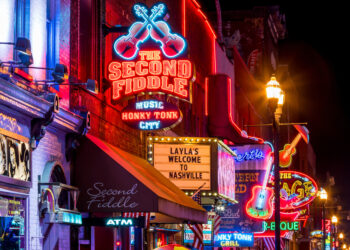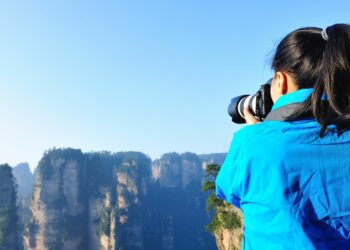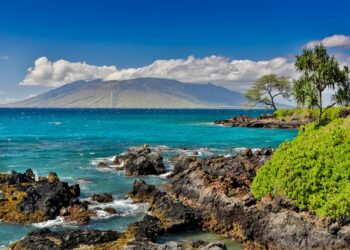Berlin is the capital of Germany, with a population of about 3.5 million people. In the 20th century, no other town had such an impact on European destiny than Berlin.
In recent history, many events of vital importance for the whole world took place in Germany’s capital. One of the worst was the Reichstag fire and the associated political takeover of the National Socialists in 1933. The Reichstag fire was interpreted by the authorities as a communist riot despite shaky evidence. It soon led to a suspension of civil rights. Therefore the National Socialists could prosecute their political opponents on a legal basis.
Affiliate Disclaimer: Our blog posts may contain affiliate links. If you make a purchase through these links, we receive a modest commission at no extra cost to you. These commissions help us fund our team of travel writers, allowing us to continue providing you with the latest travel news, tips, and inspiration. Your support keeps this blog alive and thriving, and we appreciate it immensely. Thank you!
But Berlin is also a symbol for the downfall of Nazi Germany in 1945. The Battle of Berlin from April 16 until May 2 was the final battle of World War II. The Germans lost their capital to the red army, and Hitler shot himself in the Fuehrer’s bunker. During the post-war era, Berlin was divided by the communists. Finally, the wall came down in 1989, and hundreds of thousands of Germans celebrated their newly acquired Unity.
Today, Berlin is a fast-paced megacity that is worth a visit anytime. Head of state, historical monuments and a significant cultural scene attract many German visitors. So when you plan your Germany vacation, a stop in Berlin should definitely be on your list.
Sightseeing in Berlin
1.Brandenburg Gate

Berlin’s most famous landmark and has a proud history of over 200 years. Once the symbol for the separation of East and West Berlin, the Brandenburg Gate is today the symbol for German Unity. The Brandenburg Gate was built by Carl Gotthard Langhans. The construction was assigned by King Frederick William II. The classical building is made of sandstone and reminds me of the Acropolis of Athens.
In 1793 the Quadriga was set on the Brandenburg Gate. Over time, the famous sculpture was taken down three times. After the defeat of Prussia by the French In 1806, Napoleon took the Quadriga away to Paris. Eight years later, the Allied Forces could retrieve the Quadriga, bringing it back to Berlin. During the 2nd World War, the Brandenburg Gate was heavily damaged by aircraft bombs. The Quadriga on top was destroyed so badly it couldn’t be repaired after the war, so it had to be replaced by a copy in 1956. In the following 43 years, the Brandenburg Gate was the symbol for the separation of East and West Berlin because it was a border crossing point, and only soldiers were allowed to stay in this area. Finally, on the 22nd December 1989, the Brandenburg Gate became the symbol of German Unity. The border from East to West Berlin was opened, and over 100.000 people celebrated in front of the monument.
Due to environmental damage, the Brandenburg Gate and the Quadriga had to be refurbished in 2000. Two years later, on the 3rd October 2002, the building was inaugurated to the public again. Since then, it has been a tourist magnet for German visitors from all over the world.
2.Berlin Holocaust Memorial
The decision to build a Holocaust Memorial in Germany was made by the German Bundestag in 1999. The building is a memorial to the murdered Jews of Europe. It is situated near the Brandenburg Gate and was inaugurated on May 10, 2005. In the first 12 months, it was already visited by over 3.5 million people. Already in the late eighties, there were claims of a memorial for the murdered Jews of Europe. Still, the discussion about the right place and design lasted almost ten years. Then, finally, the method by Peter Eisenman was accepted. Eisenman is a famous architect from New York and a member of the so-called New York Five, outstanding architects.
The memorial consists of a field of grey 2,711 stelae on almost 19,000 square meters. The stelae remind of Jewish cemetery gravestones while the grey colour stands for the ash of the people who were burned in the concentration camps during the reign of the National Socialists.
There is also an underground Information Centre that is maintained by a Federal Foundation. The function of the information centre is to provide information about the prosecution of Jews during the Third Reich. You will also find concrete facts about the victims like names, personal and biographical details there.
3.Berlin Reichstag
The German Reichstag building is one of the most viewed sights in Berlin. It is the seat of the German government. When the government moved from Bonn to Berlin, it decided to rebuild the Reichstag. It was destroyed during World War II and already rebuilt during the 1960ies, but the requirements were different. The British architect Sir Norman Foster accomplished the design of a futuristic building without losing its monumental look. Most impressive is the giant glass dome shooting out of the building.
4.Berlin Victory Column
Statue of Viktoria in Berlin

Right in the middle of Berlin Tiergarten is a famous monument of Berlin – the Victory Column. In 1873 the Victory Column was built before the German Reichstag to remind of the Prussian campaigns against Denmark, Austria and France. During the 19th century, the Kingdom of Prussia was a powerful and independent state of Germany. Prussia had a solid military cloud, and the people of Prussia were very proud of their military success.
Due to the plans of architect Alfred Speer, the Victory Column was moved to Berlin Tiergarten during the Nazi era. Speer was ordered to rebuild Berlin to the so-called “World Capital Germania”. Unfortunately, only a few of Speers plans have been realised before the end of WW2 ended. Also, the vision of Germania – The movement of the Victory Column was one of the realised plans.
The Victory Column itself is about 226 feet high. Visitors can take 285 steps upstairs to reach the observation platform on top of the monument. Unfortunately, there is no elevator, but your effort will be rewarded with a great view of Berlin Tiergarten.
Checkpoint Charlie
During the Cold War, Berlin was in the middle of the international conflict. As a result, the town was divided by the Berlin Wall into West and East Berlin. The eastern part was administered by the Russian communists, while the western part was under the supervision of the Allied Forces. In 1961, the communists built the Berlin Wall to keep the citizens of East Berlin from escaping to the west.

During these times, Checkpoint Charlie was the only gateway for anyone travelling from one part of Berlin to the other. But, of course, this was not possible for anyone. Only diplomats and other authorities were able to cross the border. This was a real dilemma for the Berlin people. Many could not visit their loved ones simply because they lived in another part of the town as the Berlin Wall could not be crossed. About 100 people tried to cross the wall and escape to the west, but all were killed by border guards.
To get an image of these times for Berlin, Checkpoint Charlie consists of a reconstructed US army guardhouse and hosts the Berlin Wall Museum. Here you can see films of reckless escapes from East Berlin and stories of horrible delinquency in Berlin during Cold War times, among other things related to Checkpoint Charlie.
Berlin Events
1.The Berlin marathon
Every year at the last weekend of September, the city of Berlin turns into a big running track: the Berlin Marathon. It is one of the most important events for runners besides New York, Chicago and London.
It was first organised in 1964 with only 700 participants. Today, the marathon attracts ten thousand runners from all over the world. Besides many recreational athletes, the Berlin marathon is also popular with TV celebrities and shows businesses running for good causes. Start and finish is the splendid Brandenburg Gate in the middle of Berlin. Since 1997, there is simultaneously been a challenge for inline skaters – the Berlin Skater Marathon. It is the biggest marathon for inline skaters worldwide, with a distance of 42 kilometres (ca. 26 miles). Furthermore, since 2004, it is the main event of the World-Inline Cup.
2.Berlinale Film Festival

The international film festival “Berlinale” is held every year since 1951. The ticket sale starts three days before the festival begins. The program is usually available one week before the start.
An international jury can award the films with Golden and Silver Bears for Best Motion Picture, Best Director, Lifetime Achievement and other categories. To receive a nomination, the movie has to be produced during the last 12 months. Also, they may not be shown outside their country of origin.
Some popular films awarded with the Golden Bear are Cinderella (1951), Rain Man (1989), The People vs. Larry Flynt (1995) and Bloody Sunday (2002). In 2010, the Berlinale celebrated its 60th anniversary, and the story of success will surely go on.






